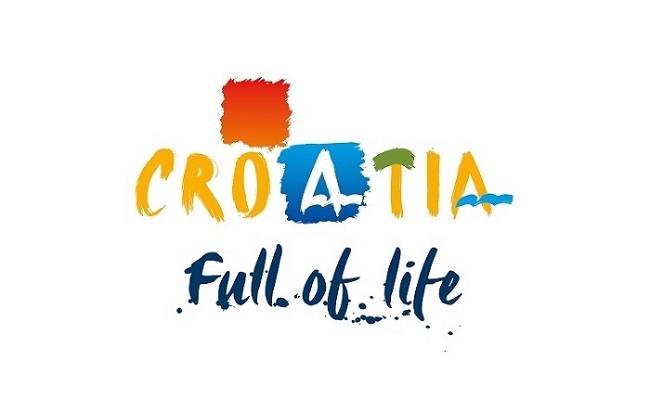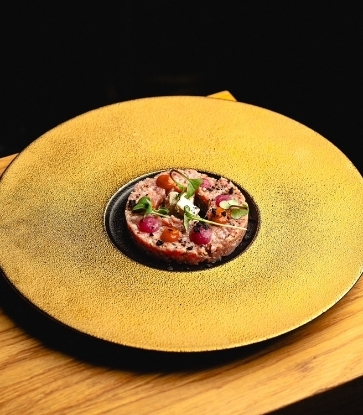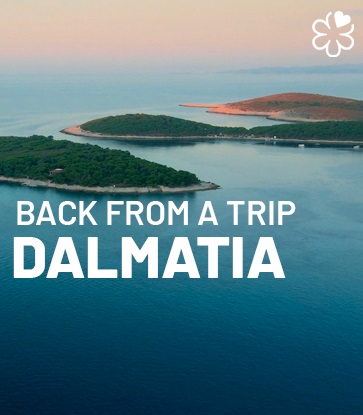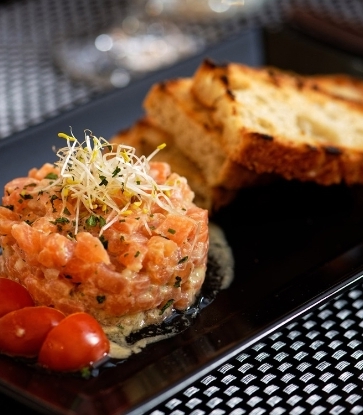The region boasts small towns with medieval walls and cobbled streets of Roman origin, rivers, lakes and an increasingly high standard of varied cuisine. We would like to introduce you to four iconic stops in this region, on an itinerary that will highlight the region’s unique artistic and cultural sights, as well as the best places to stay and gourmet restaurants for food-lovers, whether you’re in search of a simple rural inn or a fine-dining address overlooking the sea.
Zadar
A city full of passion and character, Zadar is also one of the best places in the world for beautiful sunsets. Famous for its Roman and Venetian ruins, the city’s emblematic sights include the Church of St Donatus, with its characteristic circular shape, and the Roman and medieval walls from which several gates lead into the city.
Equally iconic are two works – the Sea Organ and the Greeting to the Sun – by the architect Nikola Bašić. The organ consists of large steps that lead down to the sea, below which 35 pipes are placed: different sounds are produced thanks to the air created by the waves which then escapes through holes placed below visitors’ feet. The Greeting to the Sun, meanwhile, comprises a circle of 300 photovoltaic solar panels which aims to simulate communication with nature in the form of light. The perfect place to stay in Zadar is the Almayer Art & Heritage Hotel, one of the best boutique hotels in Croatia.
Thanks to its location in the historic centre of the city, this small family-run hotel is perfectly placed for visiting all the city’s main sights. The hotel offers 16 exclusive double rooms, all different and all with a chic, contemporary design, and is inspired by art and named after the inn in the novel “Ocean Sea” by Alessandro Baricco. Its architecture, art-gallery ambience, interior design and personalised service all combine to give it the warm atmosphere of a private home rather than a classic hotel.
Close to Zadar’s 16th-century walls overlooking Foša port, the restaurant of the same name serves contemporary-style cuisine inspired by Dalmatia and the Mediterranean, with tables arranged on a terrace facing the sea. At the helm in the kitchen, chef Saša Began creates dishes such as sea trout gravlax with beetroot, yoghurt and citrus fruit, and gnudi with Pag island ricotta cheese with crab and artichokes.


Šibenik
An ideal base for exploring two of the best-known tourist attractions in central Dalmatia (the Kornati islands and the Krka National Park), Šibenik is a small town full of surprises.
One of the few towns on the coast to have been founded by Croatian tribes rather than the Romans or Illyrians, it boasts streets that climb up to the old town, a beautiful seafront promenade and the Cathedral of St James, an extraordinary architectural masterpiece designed by Juraj Dalmatinac which was started in 1431. Among its many archaeological friezes, this symbol of the city has 71 heads carved with expressions ranging from boredom to pride, representing old local inhabitants. Pebbled streets, colourful buildings and fascinating sights make Šibenik a delightful place to explore, even if it is slightly off the tourist track compared to other places along the Dalmatian coast.
Situated under the town’s oldest ramparts, near the point where the Krka river flows into the Adriatic, with views of the channel and its magical sunsets, the Armerun Heritage Hotel & Residence has a timeless appeal. With a historical atmosphere and Mediterranean feel, this comfortable hotel in the heart of the old town boasts a host of luxury amenities, including a spa, gardens and terraces with sea views.
Meanwhile, we have two suggestions for a gourmet meal in the town or its immediate surroundings: Konoba Vinko and Pelegrini. The former, an attractive country inn situated just a short distance inland from Šibenik, offers a friendly welcome and serves delicious cuisine full of authentic flavours. Its menu focuses mainly on meat-based dishes, including its generously portioned signature suckling pig which can be enjoyed alfresco in the summer months.
Pelegrini, on the other hand, offers fine sea views and is situated in the heart of the old town where it occupies a Renaissance-style building (after which it is named), right next to the Cathedral of St James. Run by chef Rudolf Štefan, the restaurant serves dishes prepared using carefully chosen local ingredients with a focus on Dalmatian traditions that are reinterpreted with a modern twist. Examples include pasta with duck made from slow-cooked duck breast, served with a chilli sauce, confit duck breast and slices of celery.

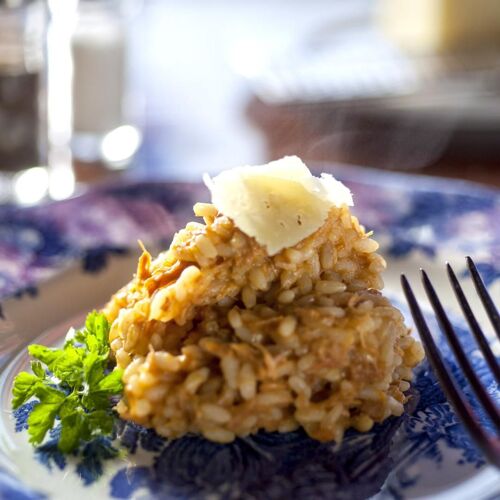

Split
Split, Croatia’s second largest city, looks out to sea, boasting beautiful buildings and a history that makes it one of the most interesting destinations in Dalmatia. The city’s symbolic sight is Diocletian’s Palace (a UNESCO World Heritage Site) which overlooks the port and is an important example of Roman architecture. A former imperial residence and military fort, this complex, built in white Brač stone and fine marble, is now a popular meeting place dotted with bars, restaurants, shops and apartments. Its peristyle is the central palace square, which local inhabitants consider to be the very centre of Split.
Situated in the heart of the city on the west coast promenade, the Ambassador Hotel is the perfect place to stay. Opened in 1937, this hotel has long played an integral role in this part of Dalmatia; from its rooftop (which is also home to a restaurant) you can enjoy one of the most spectacular views of the city, the coast and the surrounding mountains. Not far from the hotel, the first-floor Zrno Soli restaurant on the ACI Marina serves classic cuisine with seasonal menus that focus on fish, including signature dishes such as monkfish soup and cuttlefish with bulghur wheat.
Opened thirteen years ago, the restaurant has hosted important guests such as the Queen of Denmark, prime ministers, presidents, artists and the rock band Guns N’Roses. The menu pays careful attention to local gastronomy, using regional ingredients such as extra-virgin olive oil and sea salt. Meanwhile, the Il Ponte restaurant, situated near the iconic wooden Trogir bridge, offers enchanting picnics on the beach as well as a truly varied gastronomic experience. At the helm in the kitchen, Stjepan Vukadin is inspired by Mediterranean culinary traditions while paying tribute to the region through his use of seasonal ingredients, with many of his dishes cooked over the barbecue grill in summer.

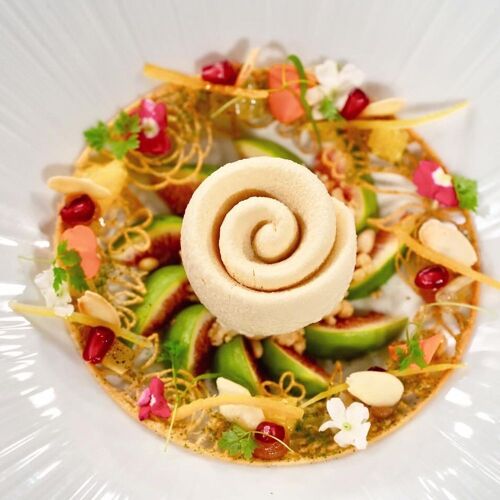
Dubrovnik
A UNESCO World Heritage Site, medieval Dubrovnik is encircled by 2km of walls which can be walked by visitors and which provide one of the best views of the city. This timeless destination on the Adriatic coast is full of history, culture and tradition: as the writer George Bernard Shaw once said, “those who seek Paradise on earth should come to Dubrovnik”. Dubrovnik is an attractive city on a human scale, where the soft colours of its rooftops and the white stone buildings create a pleasing contrast with the azure sea, an integral part of the city’s DNA.
Overlooking these crystal-clear waters and just 20 minutes’ walk from the old town, stands one of the region’s most famous hotels. An icon of luxury and design, the Hotel Bellevue Dubrovnik is carved into the cliff 30 metres above Miramare bay, offering a haven of seaside elegance. One of the most spectacular views of the Dalmatian coast can be enjoyed from its guestrooms, as well as through the picture windows of the indoor swimming pool of the spa which offers an array of Eastern and Western holistic treatments.
However, the most romantic spot from which to soak up the extensive sea views is the hotel’s Vapor restaurant terrace, where modern decor and wood flooring combine to give an elegant, contemporary and welcoming feel. Here, chef Mate Metić creates gourmet cuisine prepared using local ingredients yet with an eye to international influences. Dishes include Adriatic ceviche marinated in citrus fruit and served with a julienne of red onion, quinoa chips, salmon roe, yuzu gel and wasabi, and scallops with seaweed tempura, miso cream made with roasted cauliflower ponzu, and mango gel, and dashi and daikon consommé, as well as lobster tail on a bed of grilled polenta, sea bass fillet with dill oil, duck breast with strawberry sauce and roasted grapes, and prawn and ricotta gnocchi.
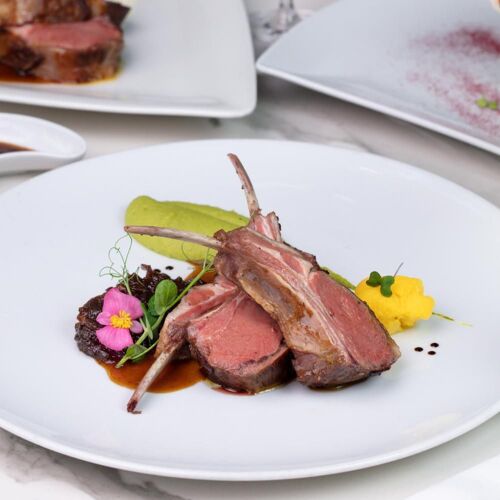

Illustration image: CERES - Foša
